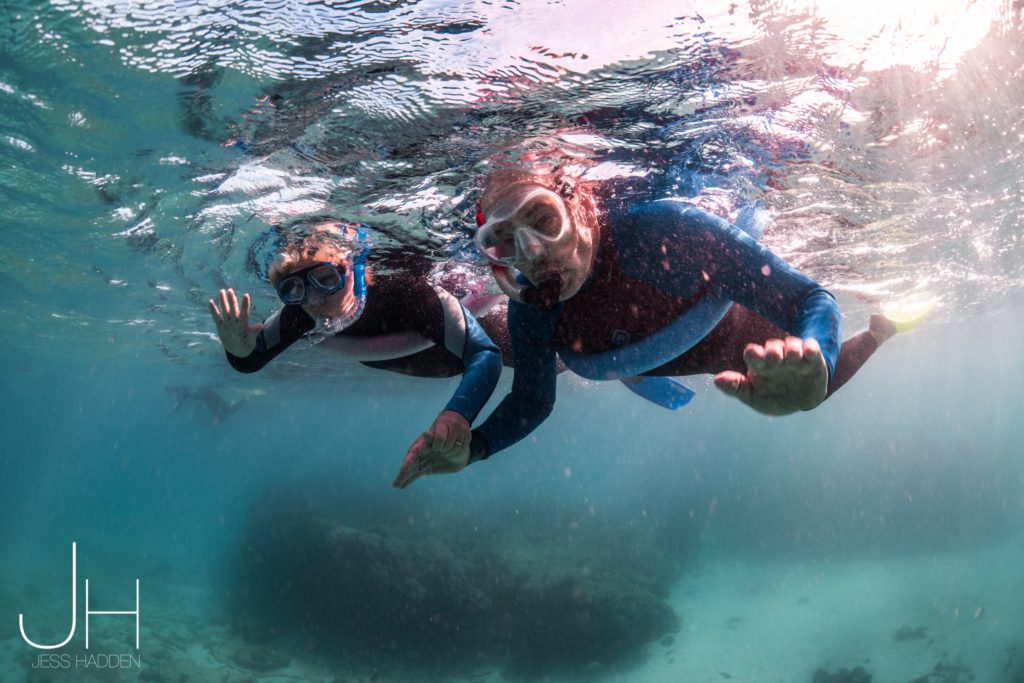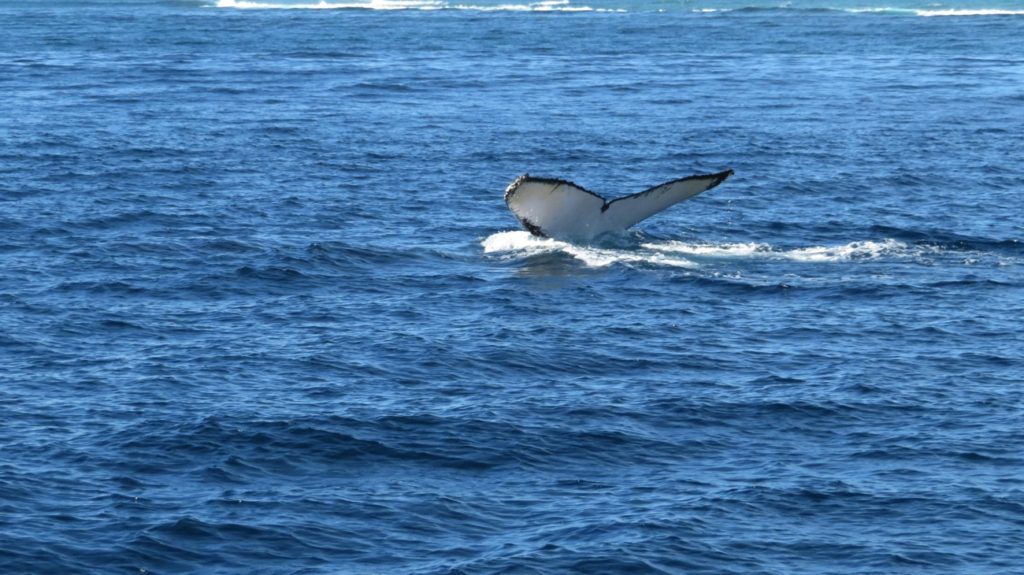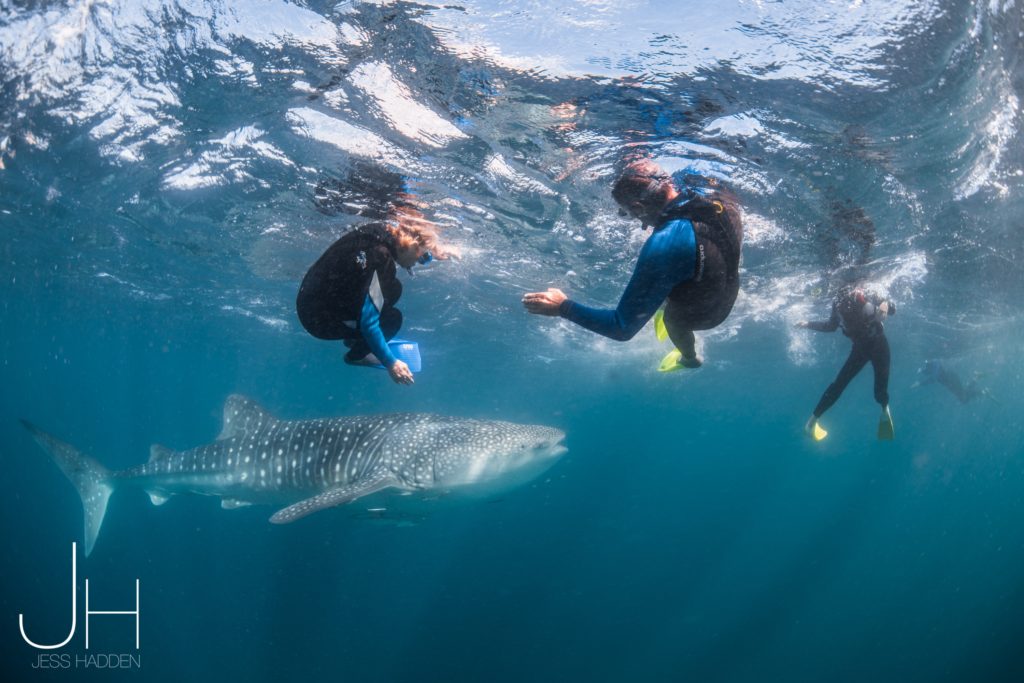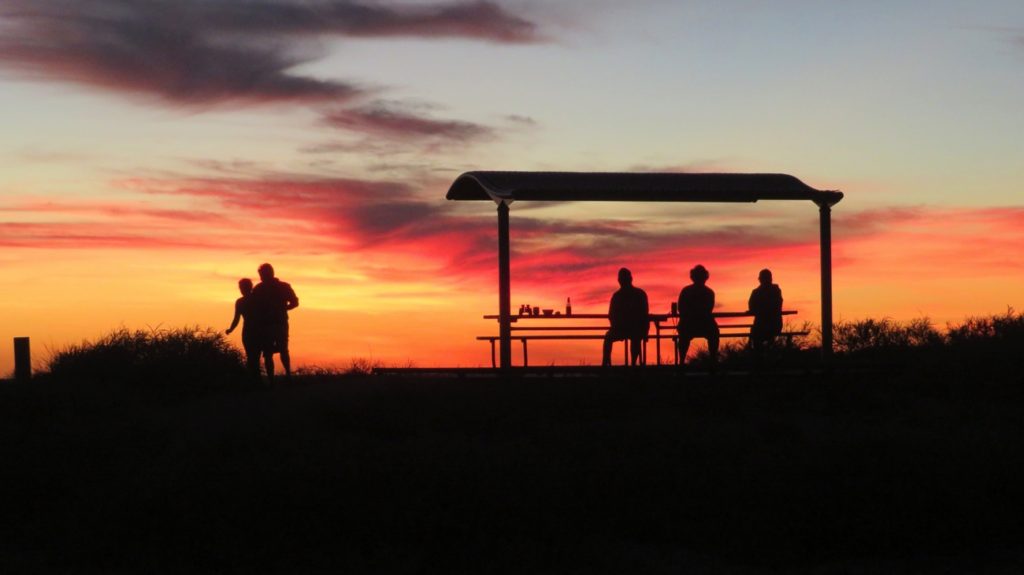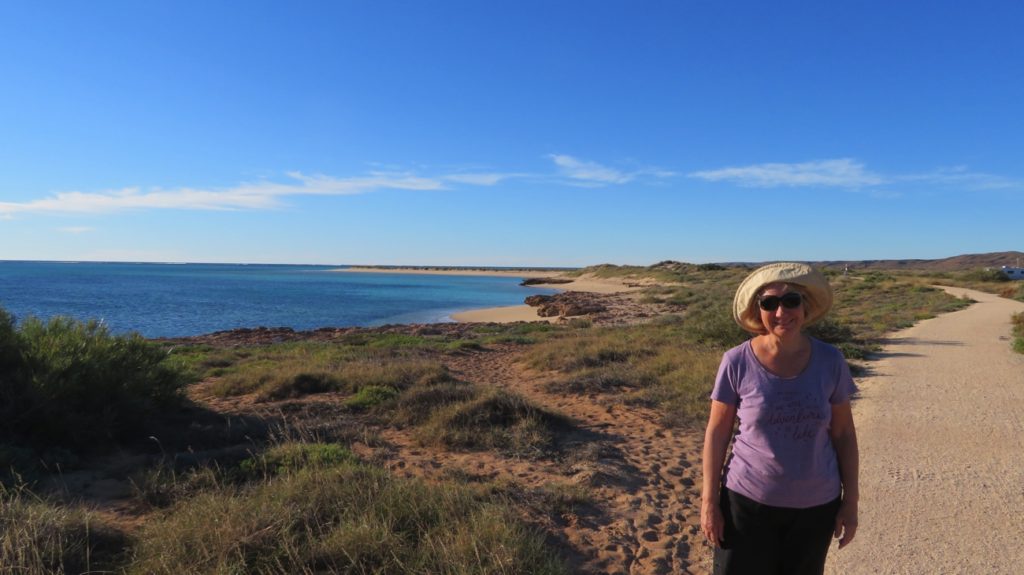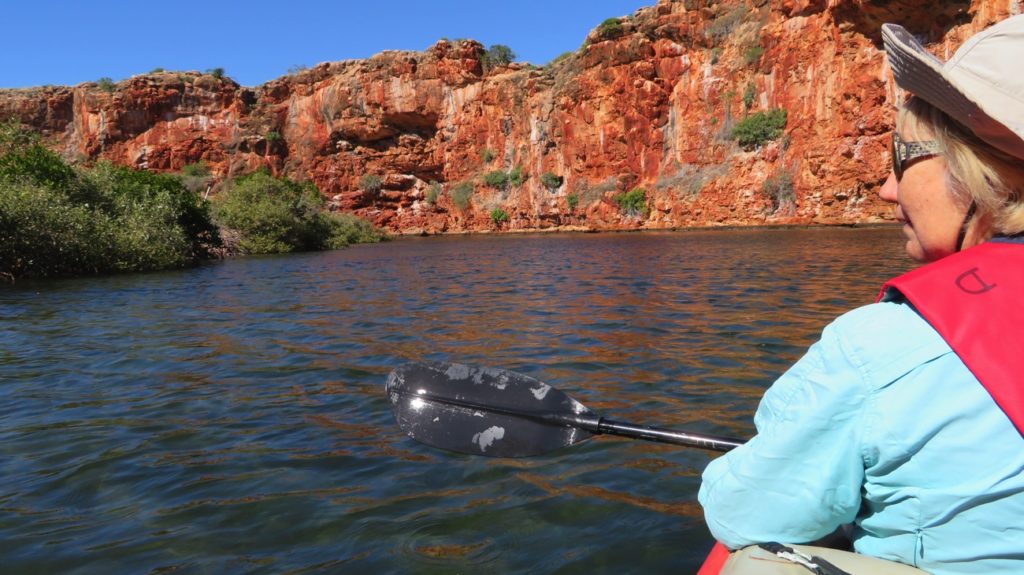29th August – 2nd September 2017
Tuesday 29th
It rained or hailed (small, thankfully – no damage to Priscilla) all night. The sandy road out was OK – still some water across the road, but the base was firm. I think it might have filled in the corrugations a bit – they didn’t seem so bad on the way out.
We headed to the coast to stay at Kalbarri. Kalbarri National Park has an inland section and a coastal section. The coastal section has many points of interest you can drive in to from the main road to see the striking coastline. We stopped at Rainbow Valley and did the 3km loop walk to Mushroom Rock. Lovely walk as it took us down to ocean level.
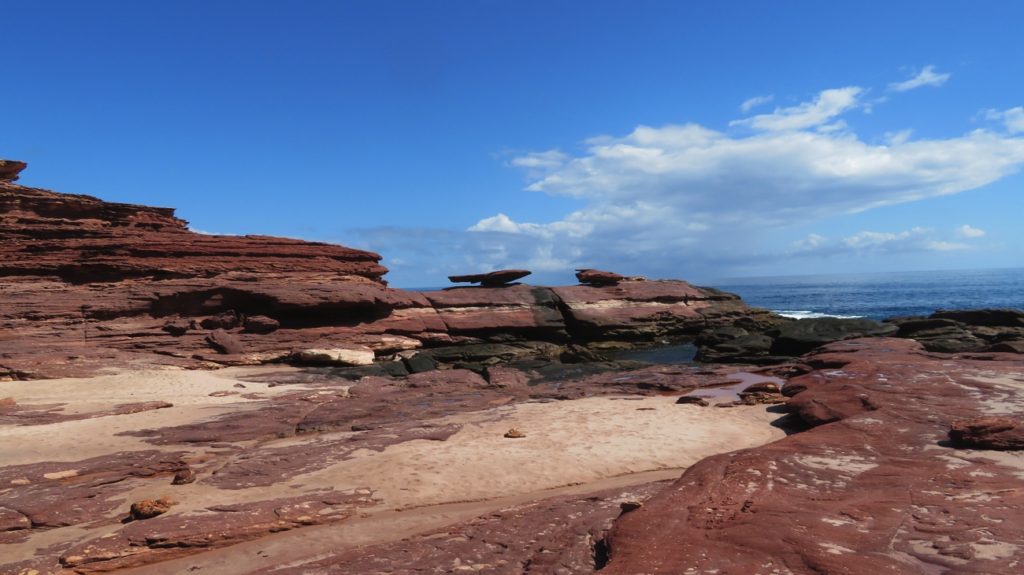
Mushroom Rock. Hmm maybe not ‘that’ outstanding, but a lovely walk to see it all the same.
After checking in to the Murchison Caravan Park we got the bikes out and went for a ride along the foreshore. Great walking/cycling paths Kalbarri – thank you.
Sunset was glorious.

Cycle up to the Zuytdorp Lookout at Kalbarri. The monument tells the story of the Dutch East Indies ships that ventured down this far. Apparently to make the best use of the winds they would come as far south as the 26th parallel, which happens to be about here, before turning. However, some came a bit close to these treacherous shores and many ships were lost. The Batavia foundered in 1628. The Zuytdorp in 1712. It carried a rich cargo of 248,000 freshly minted silver coins along with 200 passengers. Hundreds of coins have been recovered from the famous ‘carpet of silver’ in and around the wreck. The precise circumstances of the wreck remain a mystery, because no survivors reached Batavia (Java) to tell the tale. Some did live for a time in Shark Bay, where they were helped by local Aboriginal people. This contact with Europeans was probably the first ever made by Australia’s Indigenous people to last longer than a brief encounter.
Wednesday 30th
Today we’re doing the Bigurda Trail in Kalbarri NP which follows the coastline for 8km from Eagle Gorge to Natural Bridge – a 17km return walk. The walk started about 50 metres from the cliffs walking through flowering ground covers of so many different types. It was a sensory delight. Then the path curved in to follow the cliff edge.
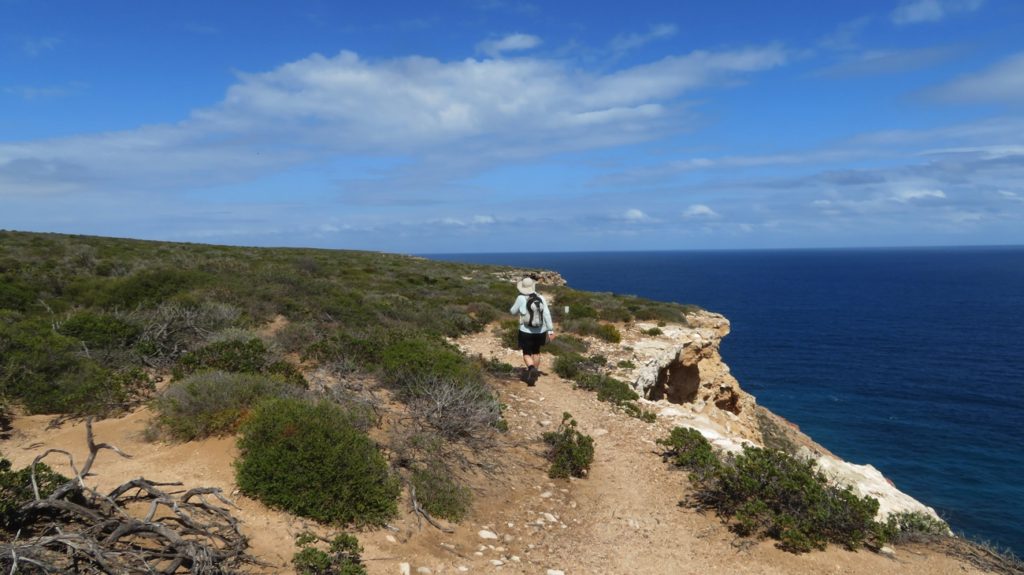
Walking along the Bigurda Trail.
The humpback whales have just begun returning south. They travel from the Antarctic in June/July to the warm waters of the Kimberley’s where they either breed or give birth. A whale pregnancy is 12 months long. From September to November they return to their feeding grounds in the Antarctic, the female whales either newly pregnant or with a calf. We saw so many whales about 100 metres offshore breaching, slapping their pectoral fins, diving to display their tail flukes and just generally having a whale of a time (hee hee). It was pretty cute when the calves breached. In the protected cove beneath where we sat for brunch was a mother and calf resting – maybe 10-20 metres offshore. The calf drinks about 240 litres of milk a day – no wonder the mother needs a rest!
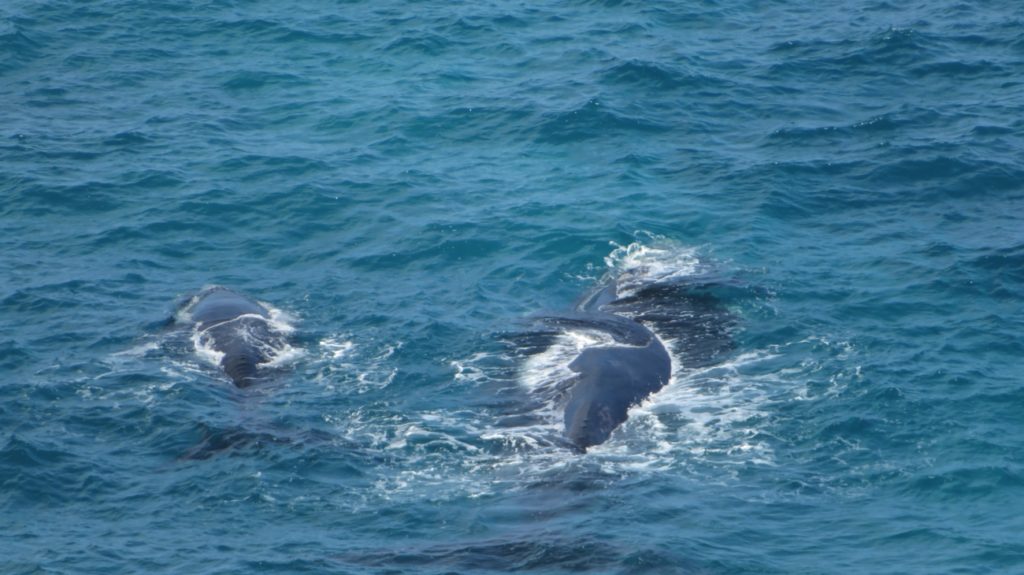
Mother and baby whale, resting.
Stopping so frequently to be delighted by whale antics it was a slow walk out. The return walk was faster – there were fewer whales and they performed less frequently, and besides we were all ‘whaled out’ by then. “Oh it’s only another whale breaching.”
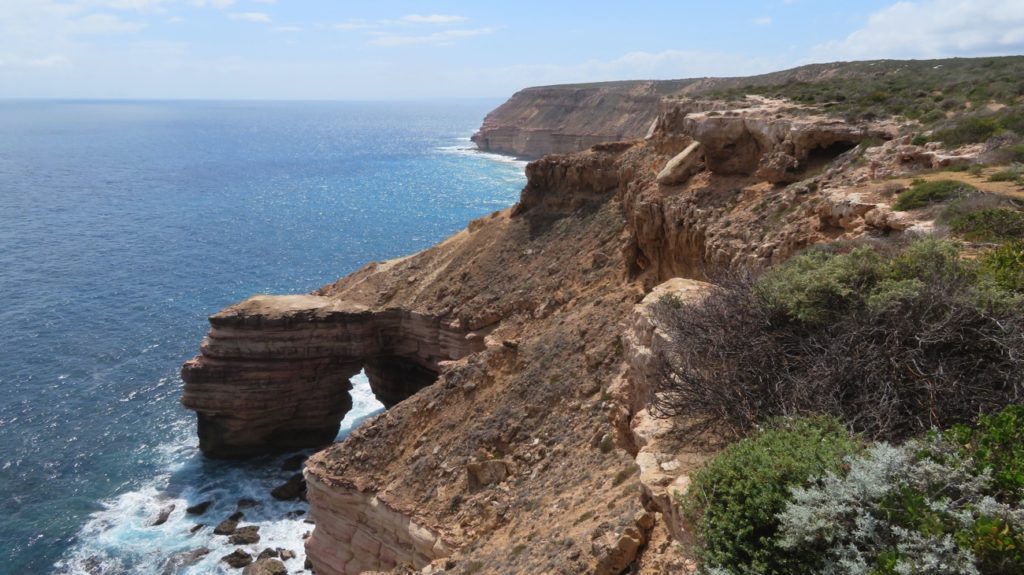
Natural Arch – the turning point of our walk.
Back to Priscilla and the caravan park and a hot shower and I discovered I’d picked up a tick in my cubital fossa (google it!).
Fish and salad at the tavern and an early night for us. Hope my arm doesn’t drop off overnight – I think the head is still in it!
Thursday 31st
Arm still intact (I’m sure the head is still there! – arm-dropping-off is just a matter of time), we grocery shopped and had a last sit on the beach in Kalbarri before heading into the River Gorges section of Kalbarri NP.
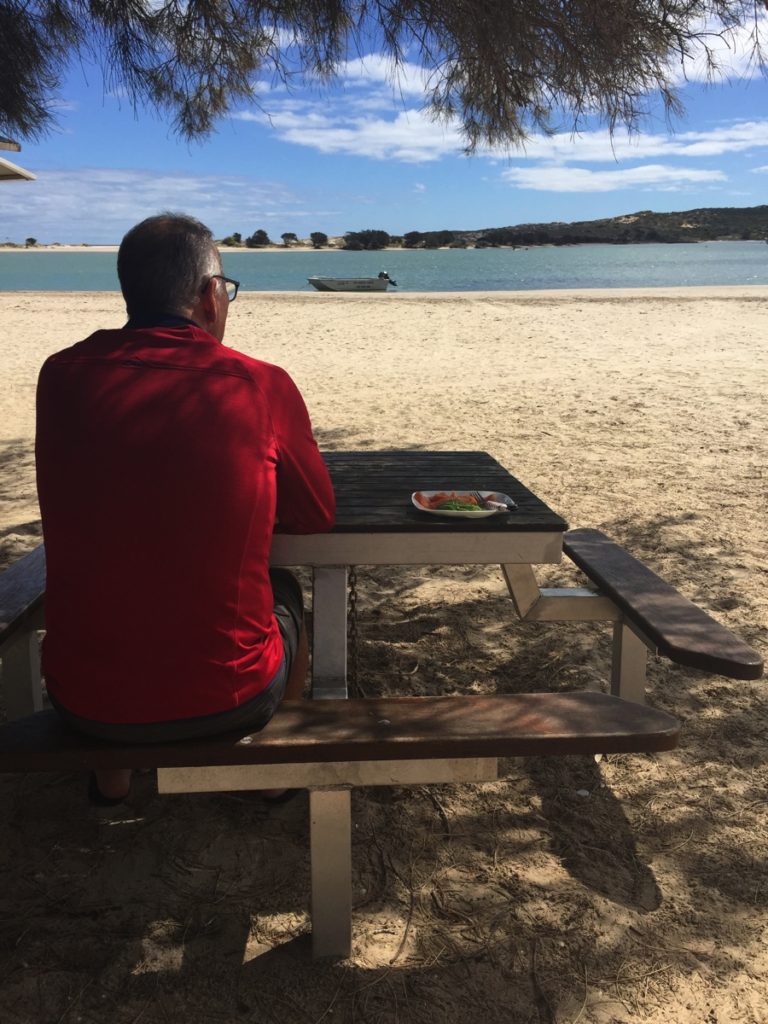
Breakfast on the beach at Kalbarri.
The Murchison River has cut an 80km swathe of gorges through beautiful reds and creamy white sandstone to form quite spectacular scenery.
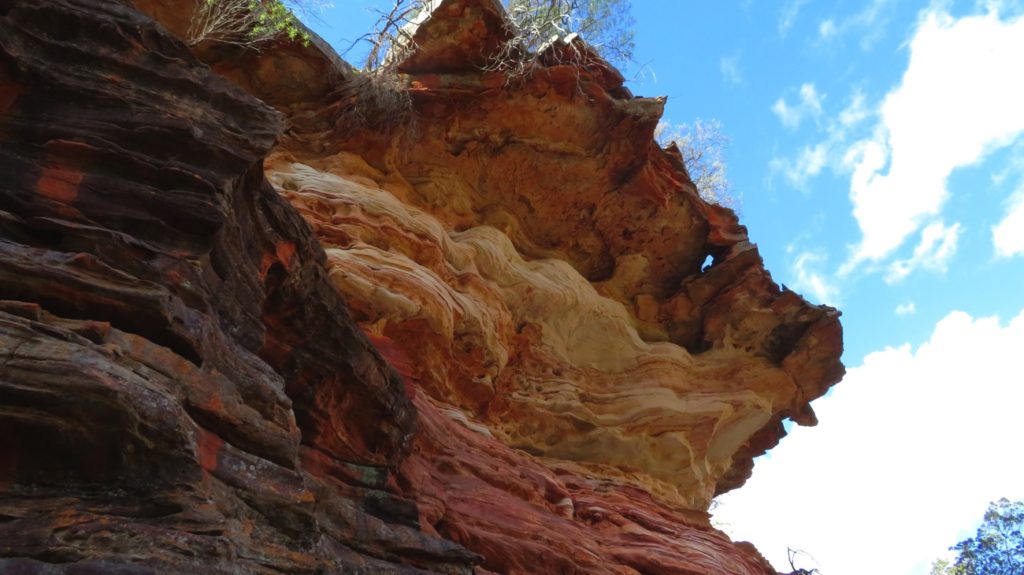
Just look at the beautiful rock layers. Z-Bend Gorge, Kalbarri NP
Today we went to Z-bend Lookout and walked the Z-Bend River Trail. It’s called Z-Bend because the faults in the sandstone caused the river, and subsequent Gorge, to form a big Z. I won’t rave on about how beautiful it is, just check out the photos. The River Trail was only 2.5km return, but it did take us down (and then back up again!) over huge rocks, sandy boulders, narrow crevices and several ladder climbs to the river. Definitely worth every slippery step!
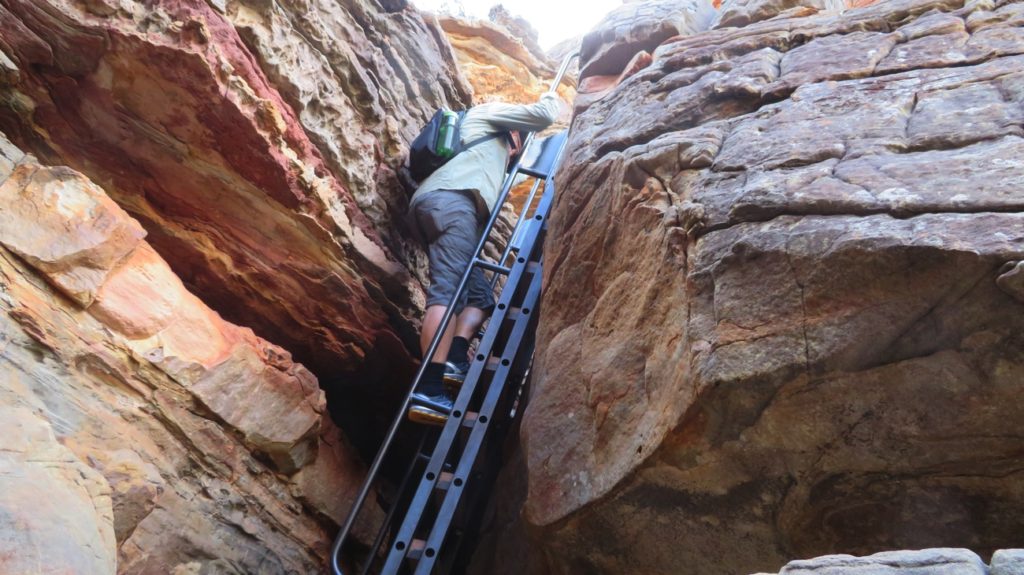
Descending the ladder – that definitely helped the descent, and ascent a lot! Kalbarri NP, Z-Bend
Tonight we’re camped at a very pretty spot on the banks of the Murchison River at the historic Murchison Station ($25/n unpwred), along with about another 20 vans! Murchison Station is a working farm – they round up feral goats and sell them!
Friday 1st September
Back to the River Gorges this morning to walk to Nature’s Window and do the Loop Hike. The wildflowers along the drive in are beautiful – a whole field of smoke bush looked ethereal.
Nature’s Window is a pretty amazing geological formation and we did the tourist thing and posed in it.
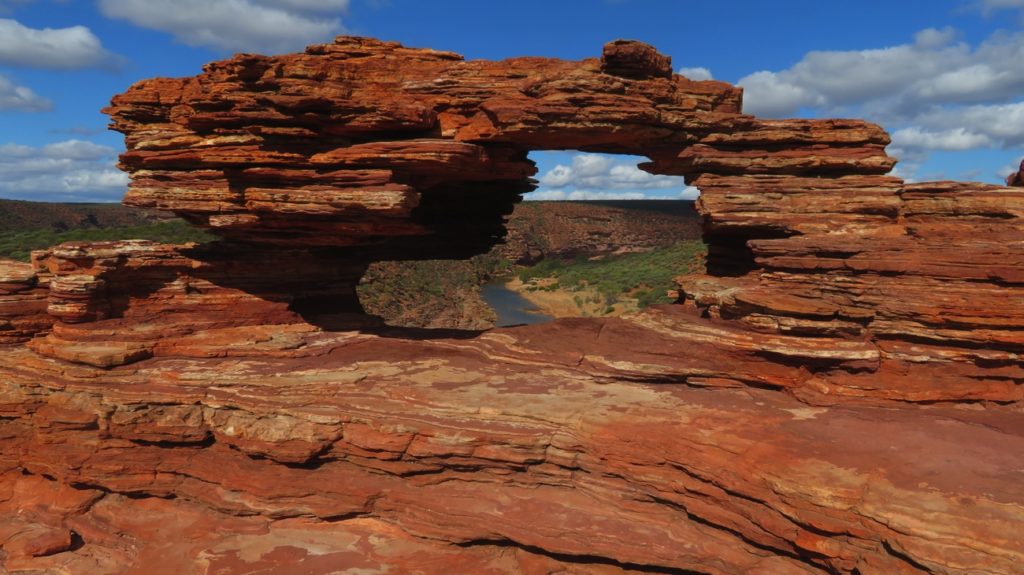
Looking through Nature’s Window to the Murchison River, below. Kalbarri NP
Onwards from here the 8km Loop Trail took us along the ridge before a steep descent to the river. This is a Class 4 walk and, yes, the descent was challenging. However at the base, as we heaved a sigh of relief having descended safely, a sign met us stating that the next 5 km would be a lot more strenuous and to turn around now should we not be ‘experienced’ bushwalkers. Did that deter us? Not for a second!

View of the river and countryside from the cliff top we followed for awhile.
There were some very tricky parts I’ll grant you. Firstly walking along a narrow ledge at the base of the cliff just above where it plunged into the chilly Murchison River, then a little further on it was ‘crawl on hands and knees’ along the narrow ledge, under the overhanging rock, above the river. Great fun really – once we’d successfully negotiated it!
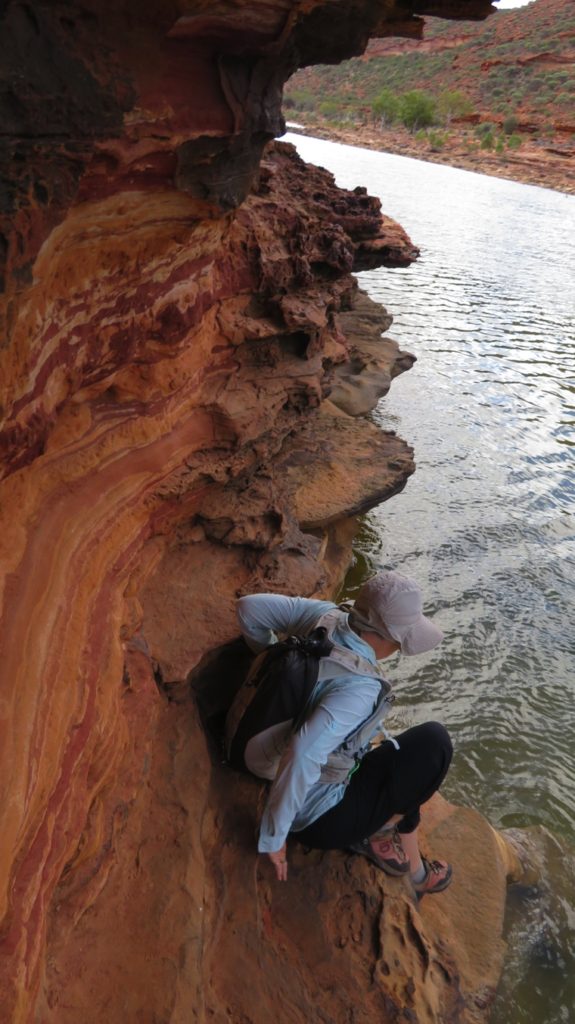
Ahh now I see why they say it’s difficult. Here I’m attempting to go to a lower level so that should I fall in I wouldn’t hurt myself too much. However … that came to a dead end. See the protruding ledges just above my left shoulder – that’s the trail!!
Anyway, all in all, a great walk with amazing views of the weathered cliff faces and the river winding through the Gorge.
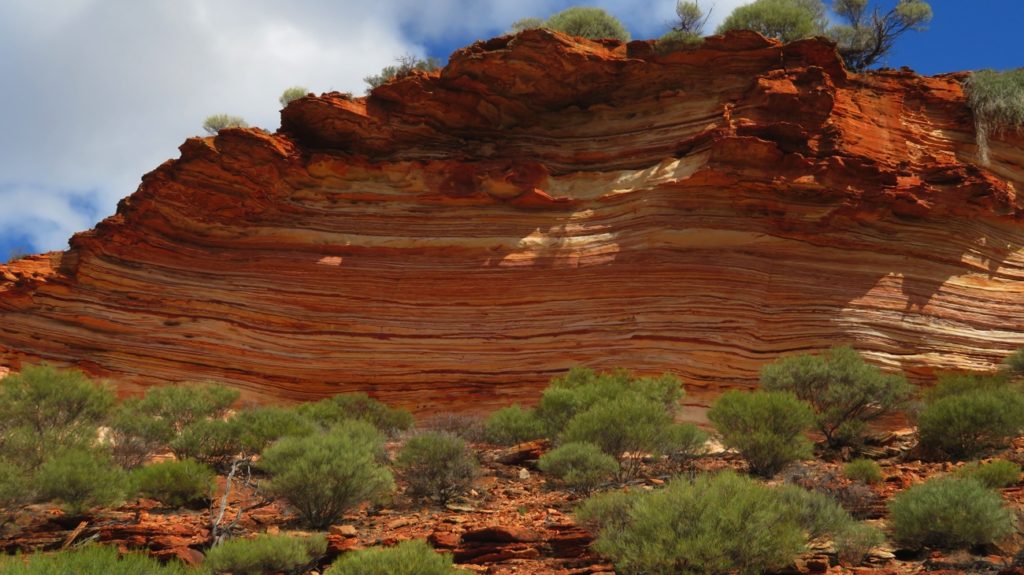
A close-up of the beautiful cliff face on the other side of the Murchison R to the Trail. These layers remind me of the Thousand Layer Cake (kek lapis) I ate in Malaysia.
There was some wildlife along the way too – euros (a type of kangaroo), black swans, herons, numerous other birds and tiny fish in the river.

A white-necked heron looking for tiny fish in the Murchison River. Loop Trail, Kalbarri NP
A quiet night back at Murchison Station camp beside the now tamed Murchison River.
Saturday 2nd
As we left the Kalbarri region we stopped in at two more Gorge lookouts in Kalbarri National Park – Hawks Head and Ross Graham lookouts.

Murchison River from the Hawks Head lookout. That protruding rock on the upper right is meant to be the hawk’s head – a little imagination helps.
Continuing north and more wildflowers – this time a field of bright yellow-flowering acacia bushes, all about a metre high.
A detour took us to the Warrabanno Chimney – constructed in 1858 for a lead smelter.

Behind me is a void. Must have been built up like this to create a draft.
A long drive (for us) – nearly 300 km today to finally arrive at Hamelin Pool Caravan Park in the Shark Bay World Heritage Region.
To see more photos from our time in Kalbarri CLICK HERE.
